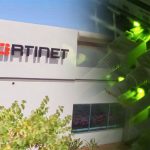Last October 1, Fortinet Philippines held its first online media roundtable for this year with sharing some updates and achievements of the company. Present during the online event are Louie Castañeda, Country Manager for Philippines and Jonas Walker, Security Strategist, Fortinet Singapore.
Here are some of the highlights of Fortinet’s media roundtable event shared by the top executives.
Fortinet Named a Leader in the 2020 Gartner Magic Quadrant for WAN Edge Infrastructure
Fortinet has been positioned in the Leaders quadrant of the Gartner September 2020 Magic Quadrant for WAN Edge Infrastructure, placing higher in ability to execute and further in completeness of vision than its position the previous year.
Earlier this year, Fortinet was named a 2020 Gartner Peer Insights Customers’ Choice for WAN Edge Infrastructure. This distinction is based on feedback and ratings from end-user professionals who have experience purchasing, implementing or using Fortinet Secure SD-WAN.


Fortinet Delivers the Most Complete SASE Platform on the Market
Because of the broad range of technologies, it encompasses, and the variety of environments it needs to support, SASE is not a one-size-fits all secure access solution. Organizations have unique needs, and they need to be able to select and deploy those security offerings that are best suited to their unique network environments and business requirements.
And yet, for SASE to work well, all of its components still need to interoperate as a single integrated system – connectivity, networking, and security elements alike. Part of the reason that sounds so familiar to us at Fortinet is that we have been delivering the core SASE requirements—plus much more—for years as part of our integrated Security Platform and Security Fabric architecture. A number of our customers looking to understand SASE have found that, with minor adjustments, they already had a SASE solution in place thanks to the power of the Security Fabric.

Fortinet Acquires Cloud Security and Networking Innovator OPAQ Networks
Fortinet announced the acquisition of OPAQ Networks, a SASE cloud provider. OPAQ’s Zero Trust Network Access (ZTNA) cloud solution protects organizations’ distributed networks – from data centers to branch offices, remote users, and Internet of Things (IoT) devices.
By combining Fortinet’s Security Fabric with OPAQ’s patented ZTNA solution, Fortinet further enhances its existing SASE offering to offer the best-in-class SASE cloud security platform with the industry’s only true Zero Trust access and security solution. It does this by integrating industry-leading next-generation firewall and SD-WAN capabilities, web


Key Takeaways from the FortiGuard Labs Global Threat Landscape Report
During the first half of 2020, evolving working environments and increased reliance on personal device usage opened the door to increased cyber threat activity. Below, are some of the most prevalent cyber trends from Q1 and Q2 uncovered in the current Global Threat Landscape Report:
- From opportunistic phishers to scheming nation-state actors, cyber adversaries found multiple ways to exploit the global pandemic for their benefit at an enormous scale. This included phishing and business email compromise schemes, nation-state backed campaigns, and ransomware attacks.
- Well-known threats such as ransomware have not diminished or disappeared during the last six months, they continue a more targeted nature. Instead, COVID-19 themed messages and attachments were used as lures in a number of different campaigns. Other ransomware was discovered rewriting the computer’s master boot record (MBR) before encrypting the data. In addition, there was an increase in ransomware incidents where adversaries not only locked a victim organization’s data but stole it as well and used the threat of widescale release as additional leverage to try and extort a ransom payment.
- Web-based malware became the most common vehicle for delivering malware, commonly being used as part of phishing campaigns and scams. This attack vector outranked email as the primary delivery vector used by cybercriminals for the first time in a while.
- For cyber adversaries, the development of exploits at-scale and the distribution of those exploits via legitimate and malicious hacking tools continue to take time. Even though 2020 looks to be on pace to shatter the number of published vulnerabilities in a single year, vulnerabilities from this year also have the lowest rate of exploitation ever recorded in the 20-year history of the CVE List. Interestingly, vulnerabilities from 2018 claim the highest exploitation prevalence (65%), yet more than a quarter of firms registered attempts to exploit CVEs from 15 years earlier in 2004.
- Exploit attempts against several consumer-grade routers and IoT devices were at the top of the list for IPS detections. While some of these exploits target newer vulnerabilities, a surprising number targeted exploits first discovered in 2014 – an indication the criminals are looking for exploits that still exist in home networks to use as a springboard into the corporate network.In addition, Mirai (2016) and Gh0st (2009) dominated the most prevalent botnet detections, driven by an apparent growing interest by attackers targeting older vulnerabilities in consumer IoT products.The 10th anniversary of Stuxnet came and went in June, bringing our attention back to operational technology (OT) security threats, such as the latest Ramsay espionage framework, geared towards compromising industrial environments. Another development was the use of ransomware in an operational technology (OT) setting.

Use the Report to Take Critical Countermeasures
This is just a brief overview of the full Threat Landscape Report for the first half of 2020 now available from FortiGuard Labs. CISOs and other security professionals are strongly advised to read the report, review its recommendations, and take appropriate measures to counter the trends it details.
It is common knowledge that attacks and data breaches attempts are inevitable. Therefore, in addition to specific recommendations above, organizations should focus their efforts at a strategic level on developing a security framework that highlights prevention and incident response while also leveraging AI capabilities to decrease the economic impact of a breach. Research conducted by the Ponemon Institute concluded that, the global six-year average, cost of a data breach amounts to $3.78 million. Although, the financial consequences of a data breach can vary based on several factors, including root causes, network size, and the type of data held by an organization, this cost is only likely to rise as more targeted attacks occur.
As always, the best defense against cyberthreats is good information. Leveraging critical threat intelligence, such as this latest edition of the Fortinet Threat Landscape Report, enables organizations to refocus and refine their resources and strategies so they can remain a step ahead of today’s threat landscape.
![]()








